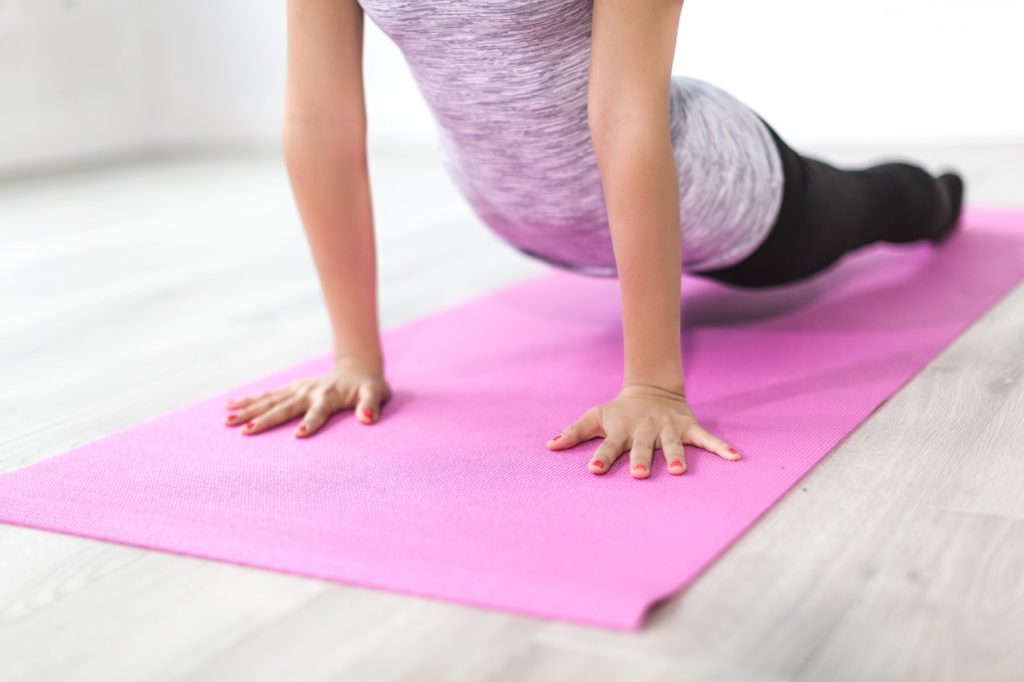Though somewhat overshadowed by its better-known neighbor, the gluteus maximus, the gluteus medius is one of the most important muscles in the human body. For runners especially, this muscle tends to be underused — but it can be easily strengthened with a few simple, targeted exercises.
Here’s what you need to know about the gluteus medius, as well as some common exercises designed to stretch and strengthen it.
What Exactly is the Gluteus Medius?
The gluteals are the body’s largest and most powerful muscle group, consisting of the gluteus maximus, the gluteus minimus, and the gluteus medius. Though the gluteus maximus is the best known of the three, the gluteus medius serves several essential functions as well. Located above the gluteus maximus and attached to the hip joint, it stabilizes the hips and enables internal and external rotation. It also contracts during abduction, supports the sacrum, and reinforces your posture.
Benefits of Training the Gluteus Medius
Without specific training, the gluteus medius will likely be weak and underused. This is true even in many people who regularly exercise. Runners, for example, typically have a weak gluteus medius, since running or walking only creates motion along a single plane and doesn’t require rotation of the hips. Unfortunately, this weakened state can then lead to problems such as iliotibial (IT) band syndrome, lower back pain, knee injuries, and tight, falling hips.
Gluteus Medius Exercises
Since regular exercise often fails to engage the gluteus medius, specialized exercises are often necessary to stretch and strengthen this important muscle. If you’re experiencing pain or lasting injury resulting from an underused gluteus medius, consult a physical therapist to create a personalized treatment plan.
While these exercises don’t require specialized equipment, a resistance band can be used to increase the intensity as desired. Before beginning exercise, make sure to adequately warm up the muscles in order to avoid injury.
1. Side-Lying Leg Raises
Begin by lying down on one side, with the lower arm extended straight above the head and shoulder to stabilize the neck and maintain proper alignment in the spine. Bend the upper arm and place the hand on the hip. While extending the legs and stacking them on top of one another, slowly raise the top leg as high as you can and hold it for a moment before slowly lowering it back down. Be sure to engage the gluteus medius while lifting the leg. Repeat ten times before switching sides and repeating.
2. Fire Hydrants
Begin on all fours, with the hips directly above the knees and the hands directly below the shoulders. While keeping the back and neck straight, slowly raise one leg out to the side until the thigh is parallel to the floor, keeping the leg bent throughout. Hold your leg at the top for a moment before slowly lowering the leg back down to the starting position. Be sure to keep the pelvis and body stable, and try to activate the gluteus medius as you lift and rotate the leg out to the side. Repeat ten times before switching legs and repeating.
3. Side-Lying Clam
Lie on one side of your body with your lower arm extended straight above the head and shoulder to stabilize the neck and maintain proper alignment in the spine. Bend the hips to about 45 degrees, and bend the knees to a 90 degree angle, with one hip lying directly above the other. The feet should be in line with the back. While keeping your feet together, slowly rotate the top leg upwards as high as you can. Briefly hold at the top before slowly lowering the leg back down. Be sure to stabilize your pelvis and upper body, and engage the gluteus medius while lifting the leg. Repeat ten times before switching sides and repeating.




